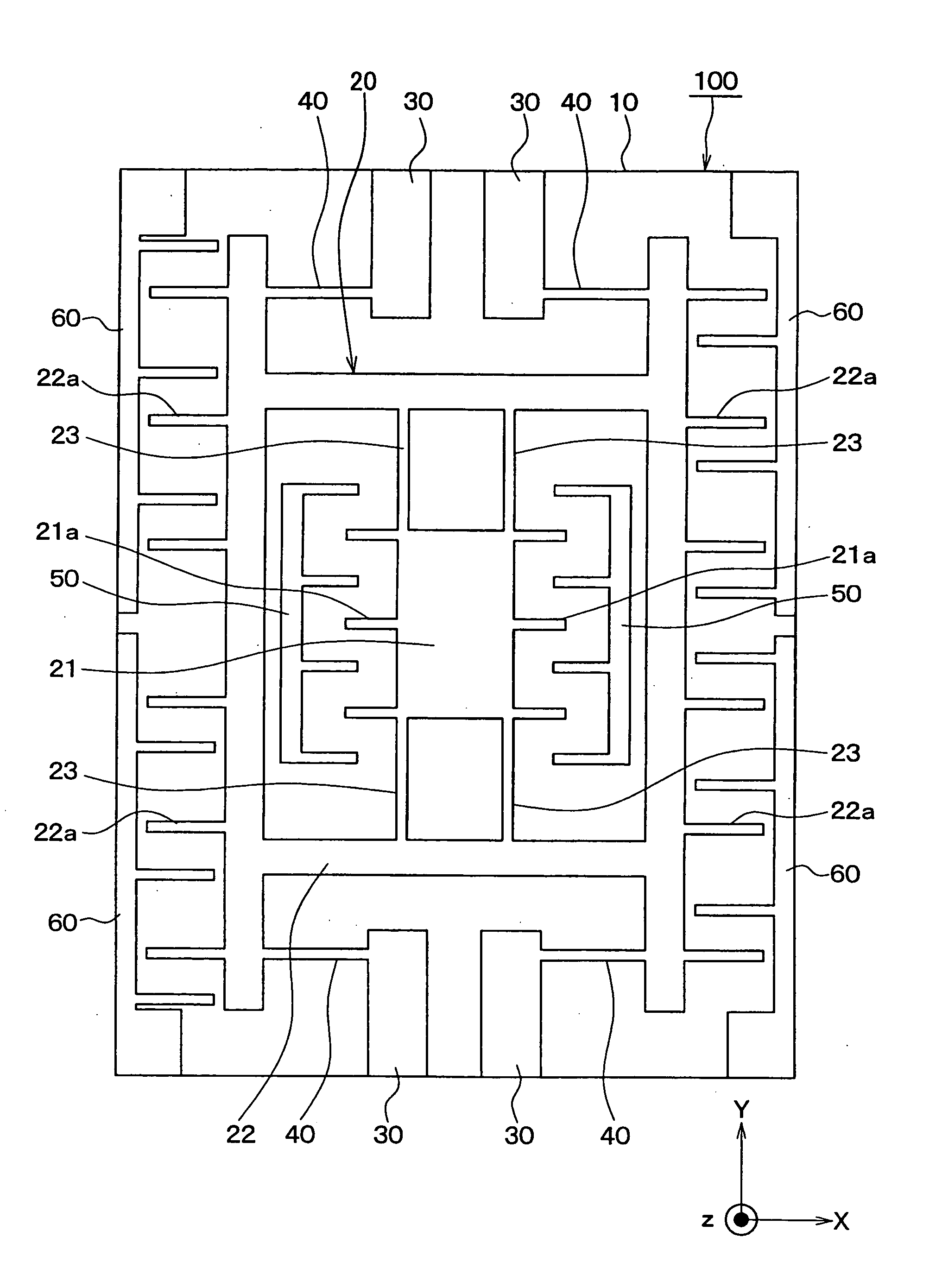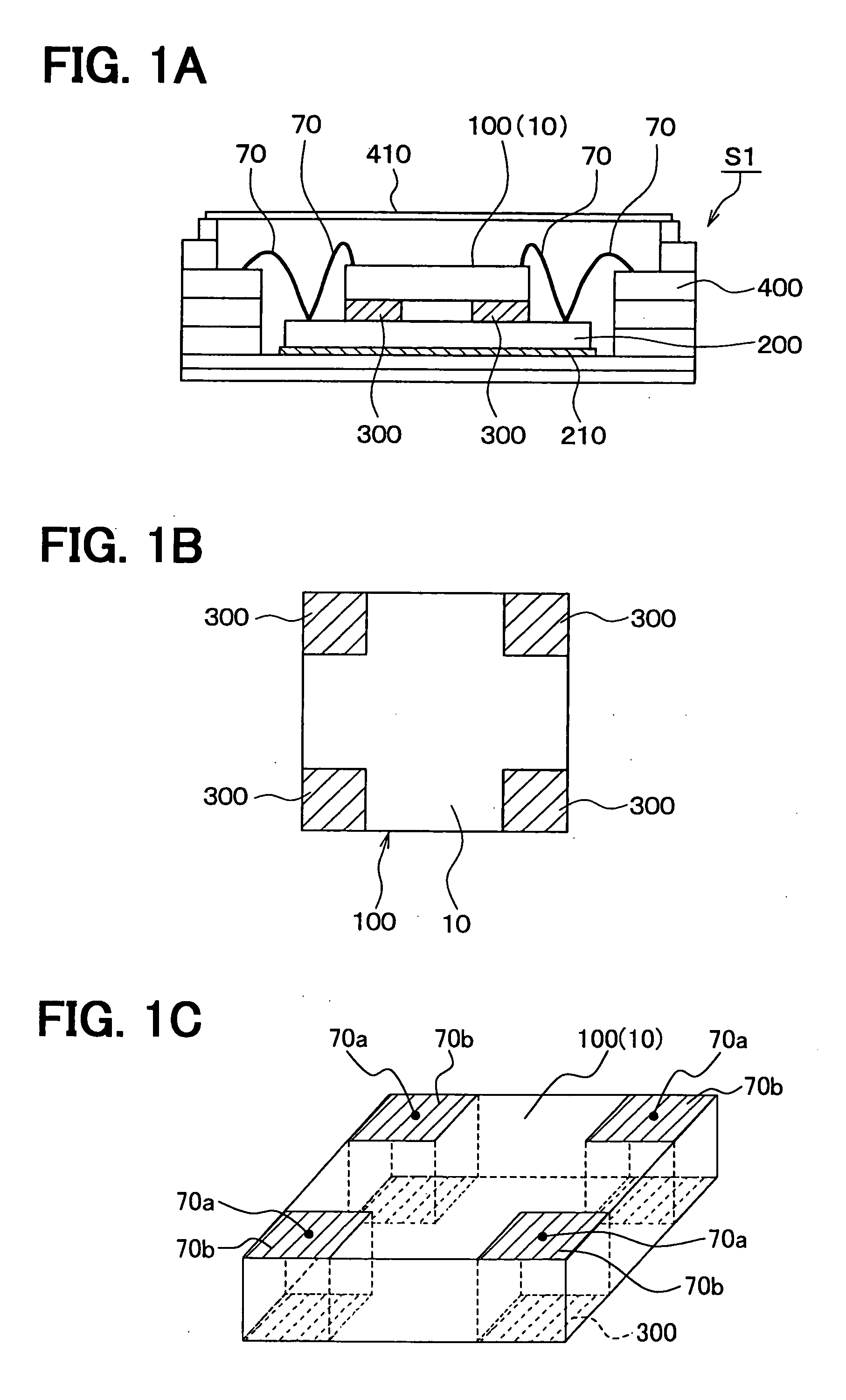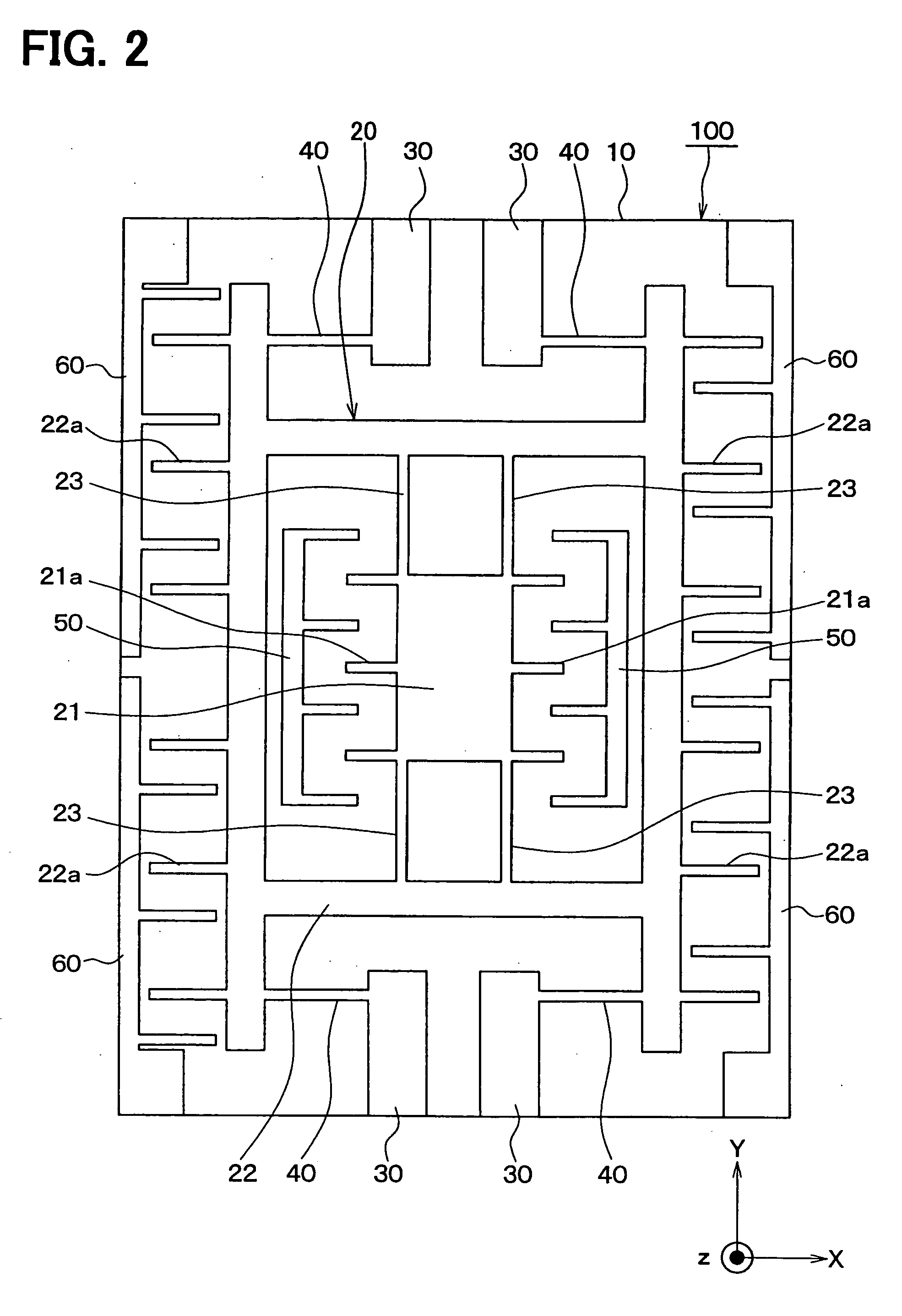Angular velocity detector
a technology of angular velocity and detector, applied in the direction of acceleration measurement using interia force, turn-sensitive devices, instruments, etc., can solve the problems of insufficient support of angular velocity detecting elements using adhesives, simple reduction of the adhesion area of adhesives, etc., to prevent a reduction in the detection accuracy of angular velocity
- Summary
- Abstract
- Description
- Claims
- Application Information
AI Technical Summary
Benefits of technology
Problems solved by technology
Method used
Image
Examples
first embodiment
[0026] As shown in FIG. 1, an angular velocity detector S1 of this embodiment includes an angular velocity detecting element 100, a circuit substrate 200 and a package 400 for accommodating the angular velocity detecting element 100 and the circuit substrate 200. The circuit substrate 200 is fixed to the package 400. The angular velocity detector S1 is constructed as a structural body in which the angular velocity detecting element 100 is laminated on the circuit substrate. 200 through an adhesive 300.
[0027] First, the angular velocity detecting element 100 will be described with reference to FIG. 2. The angular velocity detecting element 100 has a substrate 10 (base substrate) such as a semiconductor substrate, etc., and is formed by performing well-known micro machine processing with respect to this substrate 10.
[0028] For example, a rectangular SOI (silicon-on-insulator) substrate can be used as the substrate 10. The rectangular SOI can be formed by sticking a second silicon la...
second embodiment
[0068] This embodiment differs from the above first embodiment in that the arranging pattern of the adhesive 300 is changed. This difference will be centrally described.
[0069] In the above first embodiment, in the substrate 10 of the angular velocity detecting element 100 formed in the rectangular plate shape, the adhesive 300 is arranged in the four corner portions of this substrate 10.
[0070] In contrast to this, in the second embodiment, as shown in FIG. 3B, in the substrate 10 of the angular velocity detecting element 100 formed in the rectangular plate shape, the adhesive 300 is arranged in two opposite side peripheral portions of the substrate 10.
[0071] Thus, the resonance frequency of the angular velocity detector, i.e., the structural body in the direction along the horizontal surface of this substrate 10 can be reduced by reducing the adhering area of the adhesive 300. Further, the peripheral portion connected to the bonding wire 70 in the substrate 10 of the angular velo...
third embodiment
[0074] This embodiment differs from the above embodiments in that the arranging pattern of the adhesive 300 is deformed. This difference will be centrally described.
[0075] In the above first and second embodiments, in the substrate 10 of the angular velocity detecting element 100 having the rectangular plate shape, the adhesive 300 is arranged in the four corner portions of this substrate 10, or is also arranged in both the opposite side portions in this substrate 10.
[0076] In contrast, in the third embodiment, as shown in FIGS. 4A and 4B, in the substrate 10 of the angular velocity detecting element 100 having the rectangular plate shape, the adhesive 300 is arranged in the entire periphery of a side portion of this substrate 10.
[0077] Thus, the resonance frequency of the angular velocity detector, i.e., the structural body in the direction along the horizontal surface of this substrate 10 can be reduced by reducing the adhering area of the adhesive 300. Further, the peripheral ...
PUM
 Login to View More
Login to View More Abstract
Description
Claims
Application Information
 Login to View More
Login to View More - R&D
- Intellectual Property
- Life Sciences
- Materials
- Tech Scout
- Unparalleled Data Quality
- Higher Quality Content
- 60% Fewer Hallucinations
Browse by: Latest US Patents, China's latest patents, Technical Efficacy Thesaurus, Application Domain, Technology Topic, Popular Technical Reports.
© 2025 PatSnap. All rights reserved.Legal|Privacy policy|Modern Slavery Act Transparency Statement|Sitemap|About US| Contact US: help@patsnap.com



